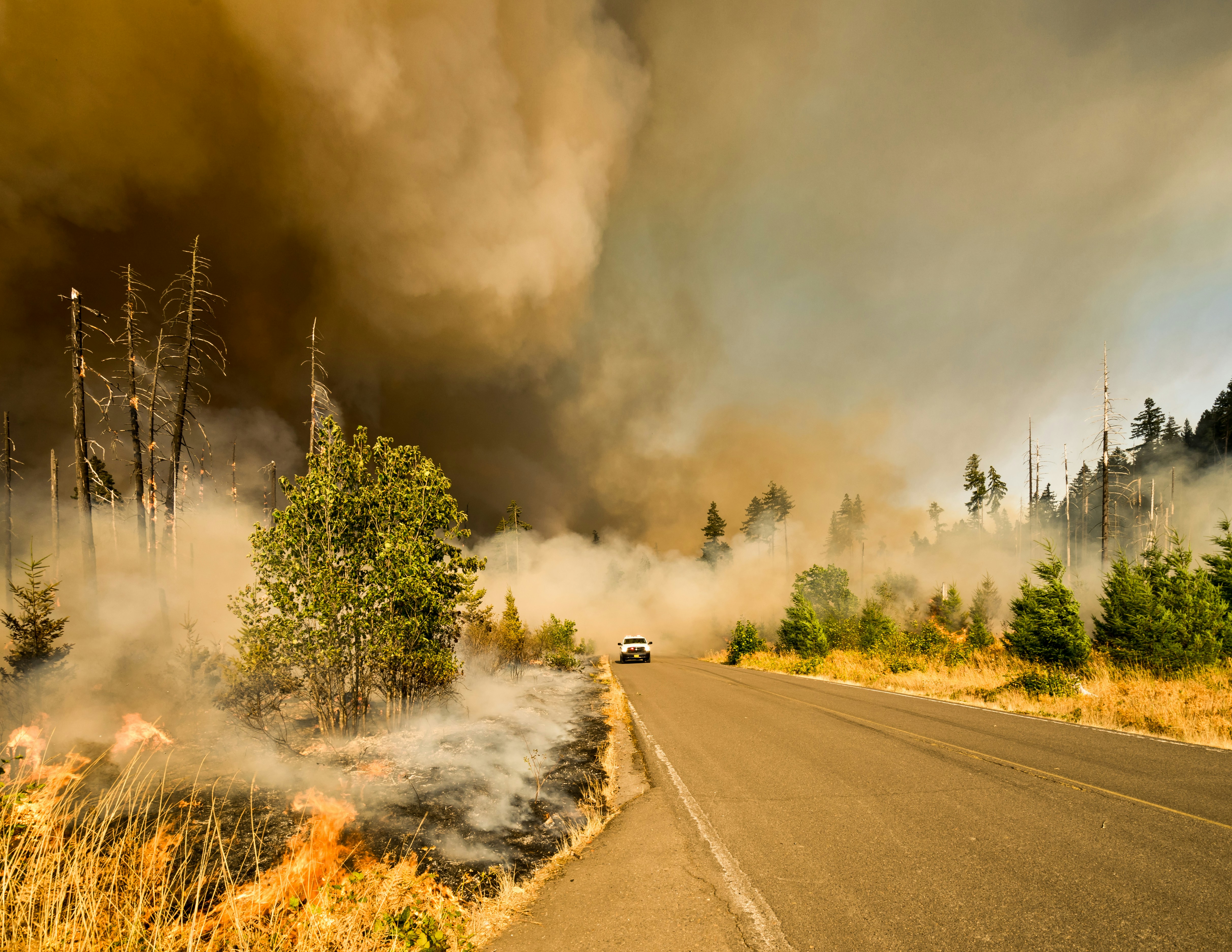Media release
From:
WMO Air Quality and Climate Bulletin highlights vicious cycle
- Air quality and climate change are closely interlinked
- Integrated action is win-win for health, economies and ecosystems
- Bulletin addresses wildfires, winter fog, shipping emissions and urban pollution
- Tiny particles called aerosols have major impact
- Cross-border hazards demand international coordination
- Improved monitoring is vital for risk management and forecasts
A new WMO report traces the complex interplay between air quality and climate, highlighting the role of tiny particles called aerosols in wildfires, winter fog, shipping emissions and urban pollution. It stresses the need for improved atmospheric monitoring and more integrated policies to safeguard human and environmental health and reduce agricultural and economic losses.
The WMO Air Quality and Climate Bulletin examines trends and geographical distribution of air pollution in 2024 as well as progress and challenges in forecasts and warnings. It is released for the International Day of Clean Air for Blue Skies on 7 September.
“Climate change and air quality cannot be addressed in isolation. They go hand-in-hand and must be tackled together in order to protect the health of our planet, our communities and our economies,” says WMO Deputy Secretary-General Ko Barrett.
Fossil fuel burning and other human activities that contribute to climate change are also sources of pollution - like black carbon, nitrous oxide and ground-level ozone, which in turn aggravate climate change. It is a vicious cycle.
“Climate impacts and air pollution respect no national borders – as exemplified by intense heat and drought which fuels wildfires, worsening air quality for millions of people. We need improved international monitoring and collaboration to meet this global challenge,” said Ko Barrett.
Ambient air pollution causes more than 4.5 million premature deaths each year worldwide, according to World Health Organization estimates, with huge environmental and economic costs.
Key findings
Particulate matter from activities such as transport, industry and agriculture, as well as from wildfires and wind-blown desert dust remains a major health hazard.
For the first time, the 2025 edition of the Bulletin includes estimates from three different models in its overview of Particulate Matter 2.5 microns in diameter or smaller (PM2.5) anomalies in 2024 (compared to a 2003-2024 reference period).
PM2.5 levels continued to decline in eastern China thanks to sustained mitigation measures. By contrast there were pollution hotspots in northern India. Wildfire activity led to above-average PM2.5 levels in Canada, Siberia and central Africa. The highest anomaly, however, was in the Amazon basin, as part of record wildfires in the western Amazon region and drought-fuelled fires in northern South America.
Wildfires are a big contributor to particle pollution and the problem is expected to increase as the climate warms, posing growing risks for infrastructure and ecosystems and human health.
Aerosols: Aerosols, or tiny airborne particles, are complex. They can both warm and cool the atmosphere depending on their composition. Darker ones, such as black and brown carbon, warm the atmosphere and melt the ice or glaciers that they land on.
Conversely, brighter aerosols, such as sulphates, reflect solar radiation back to space, providing temporary cooling before depositing as acid rain and snow.
Concentrations of aerosols in the atmosphere increased globally from the 1950s to 1980s but have come down substantially since then due to concerted efforts in North America, Europe and, later, East Asia. They continue to rise in some regions such as South Asia, South America and the northern latitudes due, in part, to increasing wildfires.
International regulations reducing sulphur emissions in shipping fuels have improved air quality and successfully cut premature deaths and childhood asthma. But they also had a measurable impact on reducing the cooling effect of sulphate aerosols, slightly accelerating global warming.
Disentangling complex interplay between aerosols, reactive gases and long-lived greenhouse gases is a difficult task and a proper understanding of these interactions will help in developing better mitigation measures for both climate and air quality. In this context, it is important to take an integrated approach to managing emissions, not only to protect the climate but also ecosystem and human health.
Winter fog: The Indo-Gangetic Plain, home to over 900 million residents, is among the most densely populated and agriculturally active regions in the world and has experienced a marked rise in air pollution as well as winter fog episodes. Although fog is a seasonal occurrence, its growing frequency and duration are increasingly linked to pollution from vehicles, construction, heating, cattle, and burning of vegetation.
“Persistence of fog is no longer a simple, seasonal weather event – it is a symptom of escalating human impact on the environment. Addressing this requires comprehensive strategies, such as enforcing regulations on agricultural residue burning, and promoting cleaner energy for cooking, heating, lighting and public transport systems,” says the Bulletin.
Wildfire-induced hotspot of PM2.5: Another article looks at PM2.5 emissions from wildfires in the amazon basin and how these emissions resulted in a measurable degradation in air quality in far-away, densely populated urban centres in Brazil, underscoring the significant consequences of the 2024 wildfire season.
Atmospheric composition monitoring infrastructure: From ozone studies in South America to improved pollen forecasting in Europe, to assessing atmospheric deposition in Africa, the Bulletin underscores the importance of a global, fit-for-purpose in situ atmospheric monitoring infrastructure, especially in developing regions. Observations are foundational. Satellites provide critical insights, but ground-based monitoring networks are essential for calibration and validation, particularly in developing countries where infrastructure remains sparse.



 International
International


